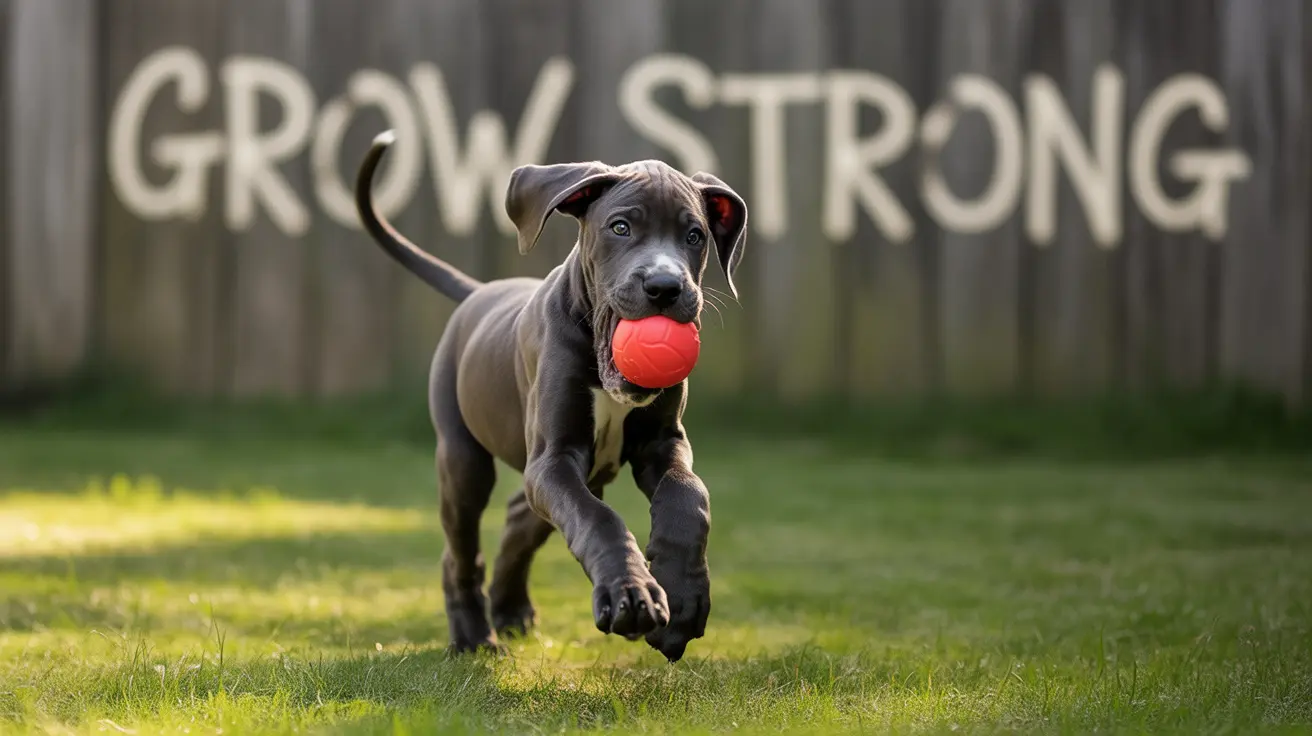Many Great Dane owners worry when their gentle giants appear skinny or underweight. This concern is completely understandable, given the breed's unique physiology and substantial nutritional requirements. However, what might look "skinny" to the average dog owner could actually be normal for a Great Dane, especially during certain life stages.
In this comprehensive guide, we'll explore the various reasons why your Great Dane might appear thin, help you distinguish between healthy leanness and concerning weight issues, and provide expert guidance on ensuring proper nutrition and health for your beloved pet.
Normal Growth Patterns in Great Danes
Great Danes have a distinctive growth pattern that often causes concern among first-time owners. These gentle giants can take up to three years to reach their full physical maturity, with several developmental stages that might make them appear unusually thin.
During growth spurts, it's completely normal for Great Dane puppies to look lanky and show visible ribs. This "ribby" appearance is particularly common between 6-18 months of age, when their height increases dramatically but muscle mass hasn't fully developed.
Understanding Proper Nutrition Requirements
Adult Great Danes typically need between 2,000-2,500 calories daily, while growing puppies may require up to 3,000 calories or more. Meeting these substantial caloric needs requires carefully planned meals with high-quality, nutrient-dense food specifically formulated for giant breeds.
Key nutritional considerations include:
- High-quality protein for muscle development
- Balanced calcium and phosphorus for proper bone growth
- Appropriate fat content for energy and coat health
- Essential vitamins and minerals for overall health
Common Health Issues That Can Cause Weight Loss
Several medical conditions can contribute to unhealthy weight loss in Great Danes:
Digestive Issues
- Intestinal parasites
- Inflammatory bowel disease
- Exocrine pancreatic insufficiency
Systemic Conditions
- Dilated cardiomyopathy (common in the breed)
- Diabetes
- Thyroid problems
- Cancer
Signs of Unhealthy Weight Loss
While some leanness is normal, certain signs indicate your Great Dane might be unhealthily thin:
- Prominently visible spine and hip bones
- Clearly visible ribs with no fat coverage
- Muscle wasting
- Lethargy or weakness
- Poor coat condition
- Decreased appetite
Ensuring Proper Weight Management
Maintaining a healthy weight involves several key strategies:
- Regular veterinary check-ups
- Appropriate portion sizing based on age and activity level
- High-quality giant breed-specific food
- Regular body condition monitoring
- Adjusted feeding schedule for growing puppies
Frequently Asked Questions
Why does my Great Dane puppy look so skinny and ribby during growth spurts?
This is normal during rapid growth phases. Great Dane puppies often appear lanky and show visible ribs as they experience significant height growth before filling out with muscle mass. As long as they're energetic and eating well, this temporary "skinny" phase is typically healthy.
How many calories should I feed my adult Great Dane to prevent them from being too skinny?
Adult Great Danes typically need 2,000-2,500 calories daily, though this can vary based on activity level, age, and metabolism. Work with your veterinarian to determine the exact amount for your dog's specific needs.
What health problems can cause my Great Dane to be underweight despite proper feeding?
Common health issues include parasites, digestive disorders, thyroid problems, heart disease (particularly DCM), and cancer. Any unexplained weight loss should be evaluated by a veterinarian.
How can I tell if my skinny Great Dane is healthy or malnourished?
A healthy Great Dane should have ribs that can be felt but not prominently visible, good energy levels, and a shiny coat. Signs of malnourishment include visible spine and hip bones, muscle wasting, lethargy, and a dull coat.
When should I take my skinny Great Dane to the vet for a health check?
Schedule a veterinary visit if you notice sudden weight loss, decreased appetite, lethargy, visible ribs or spine, or if your Great Dane remains thin despite adequate feeding. Early intervention is crucial for addressing potential health issues.
Conclusion
While it's natural to worry about your Great Dane's weight, understanding the breed's unique growth patterns and nutritional needs is essential. Regular veterinary check-ups, proper nutrition, and careful monitoring of your dog's body condition will help ensure they maintain a healthy weight throughout their life stages. Remember that some leanness is normal, especially during growth periods, but any concerns about your Great Dane's weight should be discussed with your veterinarian.






